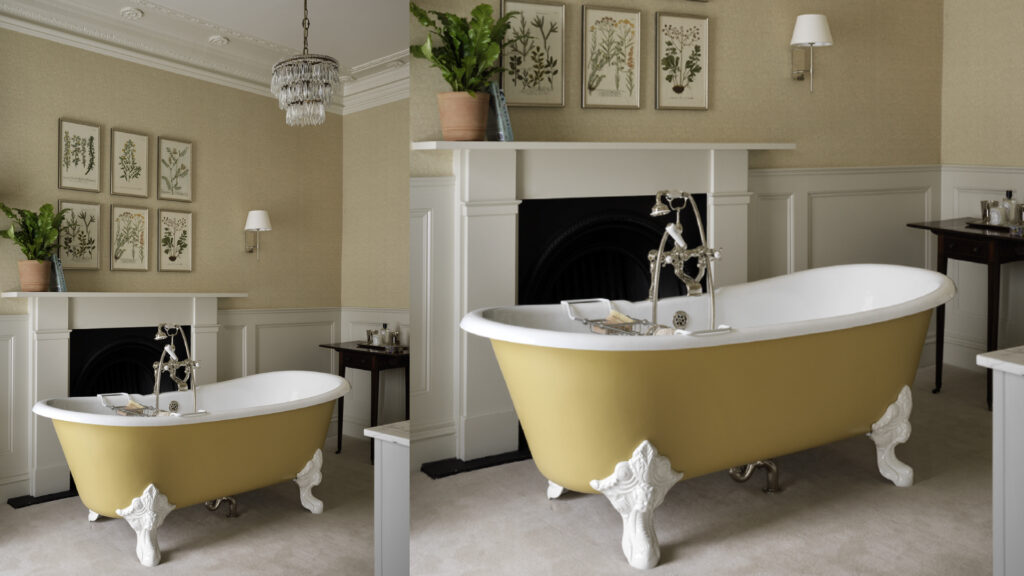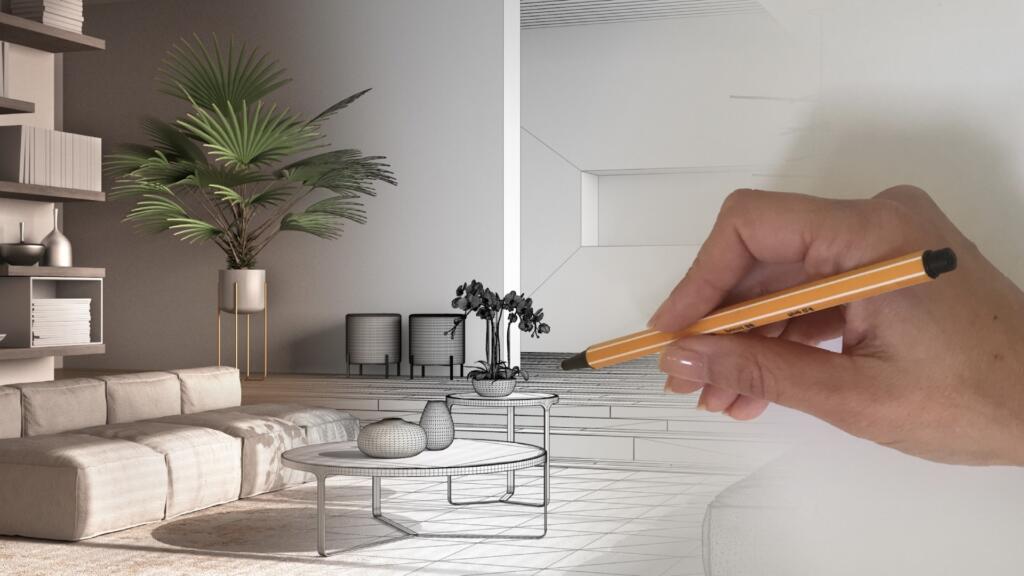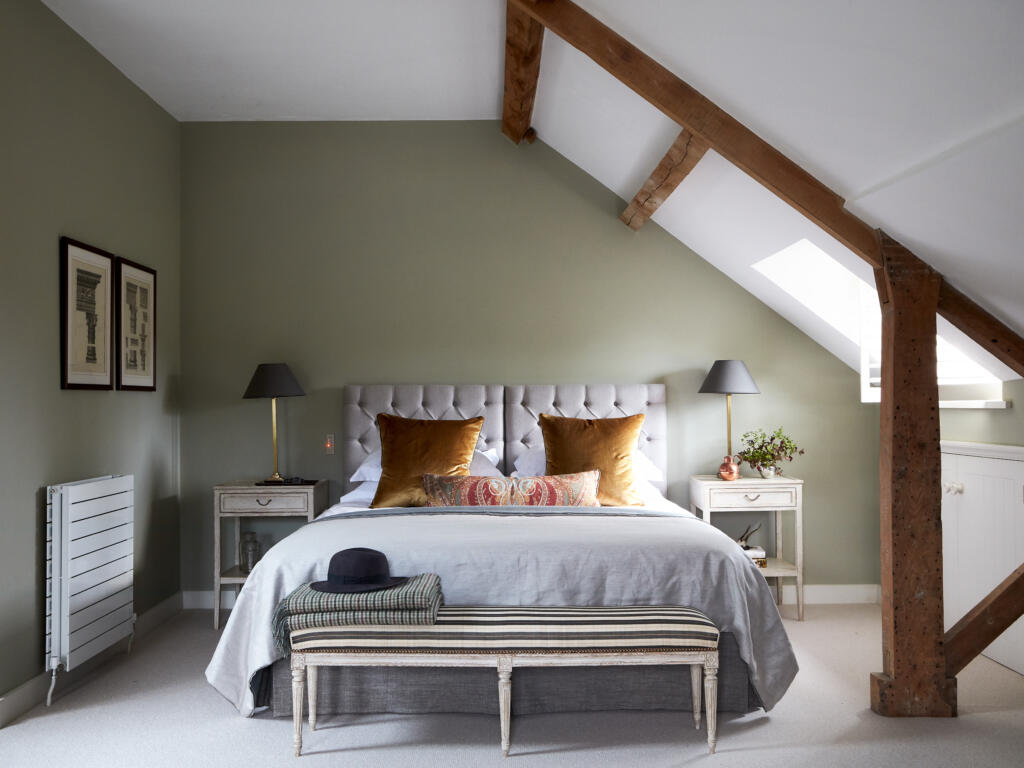
9 top designers lift the lid on their ‘cheat’ paint brands and colours
Joy Archer
A good interior designer is worth their weight in gold – here’s why…
The answer to the question ‘what do interior designers do?’ can be shrouded in mystery. This is particularly true of the jet-setting interior designer working with high-end residential properties all over the world – where it can be perfectly normal to source dining tables that cost more than the average one-bed flat.
To say that the work of interior designers is broad is an understatement. An interior designer specialising in hospital design work might not know where to start when it comes to the interior of a four-bed house in Milton Keynes or an upscale restaurant in the Cotswolds.
Likewise, a residential designer who would typically work on the Milton Keynes four-bed property may find the transition to a sweeping Scottish manor on a private island daunting.
The answer to the question ‘what do interior designers do?’ can be shrouded in mystery. This is particularly true of the jet-setting interior designer working with high-end residential properties all over the world – where it can be perfectly normal to source dining tables that cost more than the average one-bed flat.
To say that the work of interior designers is broad is an understatement. An interior designer specialising in hospital design work might not know where to start when it comes to the interior of a four-bed house in Milton Keynes or an upscale restaurant in the Cotswolds.
Likewise, a residential designer who would typically work on the Milton Keynes four-bed property may find the transition to a sweeping Scottish manor on a private island daunting.
 Credit: Shutterstock / KUPRYNENKO ANDRII
Credit: Shutterstock / KUPRYNENKO ANDRIISo, the answer to what an interior designer does starts fundamentally with: what kind of project do you have and what type of interior designer do you need?
Let’s imagine that the project in question is a UK-based residential one. Let’s say you have a four-bed, detached house worth £500,000 that needs a full renovation. You think your budget, all in, will be around £200,000. Based on that information, here’s what you can expect…
 Credit: Shutterstock / Robert Przybysz
Credit: Shutterstock / Robert PrzybyszIn the USA, this question is much easier – and clearcut – to answer than in the UK. This is because across the pond, a person must hold a licence to be legally called an “interior designer” and this licence typically requires a bachelor’s degree in the subject as well as two years’ on-the-job training.
But here in the UK, anyone, anywhere, anytime, can use the title “interior designer”. So it really helps to understand, for your specific renovation project, what your interior designer should be able to do.
In the UK, the British Institute of Interior Design (BIID) is a helpful resource for helping you to identify the right, highly-skilled interior designer, for your specific project. It also gives a good explanation of what an interior designer generally does.
A very brief definition of an interior designer is someone who will assess your project space, come up with an initial concept and space plan (create a layout), generate a range of technical drawings and visuals, provide project management services and be the point of contact for all contractors. They will do this within the legally-required framework of regulations including building, and health and safety.
By far the best and most common way to find an interior designer is through word of mouth. If you know someone who has had their property professionally designed, and you love the results, you can get in touch with the designer or ask them for a referral to another designer they would recommend.
 Credit: Shutterstock / fizkes
Credit: Shutterstock / fizkesWorking with an interior designer is a luxury expense, so one of your key considerations should be whether there is room in your budget to invest in employing one.
Something to consider is that an interior designer is trained to cover a massive amount of design and decoration ground, quickly and seamlessly. What an interior designer can do in four to six months might take those who are untrained, years to achieve – with typically far less aesthetically pleasing results and more costly mistakes.
So no, you may not technically need an interior designer for this case study project. But if you do use one, the aggravation and time-consuming nature of renovation and decoration work is handed to a master in the field.
Indeed, in some cases, the client gives their chosen designer a key to their home and leaves them to specify everything, even down to the toilet paper. Many feel this is a luxury worth paying for.
 Credit: Mariama Janneh Interior Design
Credit: Mariama Janneh Interior DesignMariama Janneh Interior Design specialises in “a straight forward package system with a fully automated online experience to simplify interior design for everyone”. Janneh says: “It is easy to worry about aspects such as cost spiralling or the process taking too long or fear that a designer might take over. But designers are here to work with the client and hopefully to bring their dreams to life. A good designer will work to create a concept that works for the client, taking into consideration time constraints, budget and taste.”
Interior design used to be the preserve of commercial projects and the very wealthy but as the industry has evolved, it is now possible to experience an interior design service at any budget. That said, it is worth noting that the luxury projects featured in magazines can represent millions of pounds of investment in architecture, fixtures and furniture – sometimes in a single room.
At our case study price point, it is unlikely the designer will be creating any bespoke designs or sourcing high-end textiles or furniture pieces. However, an inventive interior designer who is used to working at the case study price point should still be able to pull nice decor schemes together. Realistically, purchases will be made off the shelf and predominantly from high street to mid-priced stores.
 Credit: Shutterstock / Archi_Viz
Credit: Shutterstock / Archi_VizBefore deep diving into the technical stuff, there is one key point you need to understand when you start considering what an interior designer will bring to your detached house renovation.
The most important thing is to make you feel happy and at ease.
Why? Your interior designer will hear some very personal information about how you live your life. They will also likely be privy to those heated conversations when things aren’t going to plan because, say, one party decides they need a Calacatta marble island when it was previously agreed it was way over budget.
You need to identify an interior designer you are comfortable having in your most intimate space for months on end. An interior designer who makes you feel judged or uncomfortable is not going to reassure you.
Janneh agrees that taking a considered approach to choosing the right designer is very important. “We are all different. If you want a service that will take care of your project from concept to completion, an online service won’t be for you.
“Don’t choose a designer based on cost. Choose based on their design ethos and style. You might like the price of a certain designer but if their style doesn’t match your taste this could ruin the relationship between client and designer.
“Choose a designer that has clear information and transparency. And don’t be afraid to ask questions. After all, you are paying for a service so it’s imperative you know what you are getting,” Janneh adds.
Identifying project and personality mismatches cuts both ways. An interior designer might turn down work because they have concerns about a potential client.
Putting personality and attitude aside, there are some key skills and experience you should be seeking for an interior designer working on this specific renovation project.
It isn’t a hard and fast rule, but interior designers specialise in particular areas for a reason. Consider this: if a designer typically works on £2,000,000+ properties, not only will they not be incentivised to work on your project, but even if they did take it on, most of their contacts will be in high-end residential areas and will quote prices accordingly.
A better option may be a designer who has a portfolio of work at your project price point, as this experience forms the bedrock of their budgeting skills.
Your interior designer should be able to confidently scan your mood board for, say, a kitchen and tell you if your expectations are in line with your budget. If not, they should be able to show you design options based on what you can afford to pay.
Along with your builder (if you have one), your designer should be listening to what your vision is for the property renovation and getting a good handle on what the overall construction costs will be. They should then make the absolute most of the space with the available resources.
At the higher end of the market it is not unusual for clients to start from scratch. In a case where a client already has furniture, art and accessories they wish to keep, incorporating them might be one challenge the interior designer undertakes.
Any interior designer worth their salt will have names they can recommend for almost all tasks related to your renovation project. And, if they don’t have a contact, they will likely know someone who does. This is a huge advantage using an interior designer who will be actively getting costs while refining the concept of the project.
You should expect an almost forensic analysis of how you live and how you want to live. What you love and what you dislike. What your favourite holiday destinations are, what hobbies you enjoy doing, plus many other aspects of your life. Along with monetary considerations, these feed into the creative melting pot that will define how your renovation will end up looking and ensure you get a one-of-a-kind space that reflects who you are and your needs.
For example, a designer will be aware if you have any physical challenges that need to be taken into consideration. If you plan to stay in the property for another 20 years, they will be thinking about this too. Included under this heading is space planning – deciding the layout of your space, based on several factors.
Your designer will need to communicate to you what they propose for the project but also communicate to other professionals by way of technical drawings. If you do not yet have a builder, this collection of drawings and specifications will form the backbone of your tender package, which will give prospective builders the information they need to quote for works.
Before anything is actually bought or built, your designer will have created a fairly sophisticated budgeting document giving a breakdown of everything that will be purchased, room by room. As the project progresses, this document will become more refined as final decisions are set in stone. Mood boards will be updated, drawings tweaked, and as the weeks progress, each room is designed on “paper” and you know what will be going into your newly renovated home and, more importantly, what it will cost.
Once your project is well underway, and the site becomes a hive of activity, your interior designer will now be liaising with contractors along with any engineers and specialist tradespeople.
Even a modest project will require a copious amount of ordering and deliveries. Some of these orders will be the responsibility of the contractor, but a lot of it will come under the interior design umbrella.
It might be worth noting that on a project of our case study price point, some interior designers may decide they won’t be involved with purchasing and deliveries and hand over the finely detailed specifications to the homeowner so that they can carry out the ordering and accepting of deliveries on their own. This will also leave the client to carry out any furniture placement on their own.
For those designers who do take on this task, they are worth the additional fee that is discussed upfront as there is a lot of time and planning that goes into this stage of the process.
 Credit: Shutterstock / goodluz
Credit: Shutterstock / goodluzDid you know that according to the Architect’s Journal only 6% of newly-built homes in the UK use an architect’s services? When it comes to a renovation such as in this case study, with an interior designer and builder on board neither an architect, nor an external project manager, are likely to be required.
There are several reasons for this but in the case of projects using an interior designer, they themselves must be well-versed in creating technical drawings that are easily read, understood and implemented by other industry experts.
What’s more, an interior designer knows who to call when specialist help is required to carry out specific drawings and calculations. They will know when a structural engineer needs to come on board to calculate load bearing for a beam or when an expert in underpinning basements is necessary.
They, along with the builder, should have a good grasp of dealing with building control and ensure all work complies with required regulations.
Indeed, with some years’ experience under their belt, an interior designer should be quite comfortable designing your entire dream house from scratch.
On larger, more complex projects, interior designers often do find architects to be invaluable to the project.
 Credit: Shutterstock / fizkes
Credit: Shutterstock / fizkesHopefully you now have a better idea of what an interior designer does and how they can be of value to your case-study project. But, how much will all this cost you?
Before you sign on the dotted line and take on the services of an interior designer, they should first provide you with a Scope of Works covering all of the tasks they propose to carry out on your project as well as a Fee Proposal.
What will be in the Fee Proposal really comes down to how an interior designer charges and this is an individual matter.
However, by way of example using our case study, if you employ an interior designer to provide a full service that includes design, supply and installation, they may decide to charge 10% of the overall spend of the project. Therefore, of the £200,000 budget, the interior designer may charge £20,000 with a time frame for their input on the project clearly set out in the Scope of Works. An interior designer will usually include a clause in their contract that will protect them from any financial loss due to an indecisive client – which can be the bane of many an interior designer’s life and may trigger an hourly rate once the agreed project timeframe has been exceeded.
Some designers may opt to charge on an hourly basis with the national average being £25-£150 an hour, depending on experience.
If your project happens to already be fully renovated and you just require interior decoration services, some interior designers specialise in working on a room-by-room basis. My Bespoke Room is a market leader in providing digital-only, pocket-friendly, decor-only services from £395 per room.
Lucy Henderson, head of interior design at My Bespoke Room, says getting started with online design is simple and fun. “You’ll be in touch with your designer throughout, with our easy online chat (just like WhatsApp) and over two Zoom calls. We also have a lovely shopping support team who will be there for as long as you need them to help with samples, plan deliveries and keep you up to date with any orders.
“The beauty of it being online is that you can work with the very best designers no matter where you live, at a fraction of the cost and from the comfort of your own home.”
Janneh offers these top tips for engaging with online-only design decoration services:
One of the key perks of an interior designer is that they receive trade discounts on a lot of what they purchase – this can be anything from 10 to 30%. Different interior designers approach this discount in different ways. Some will pass a portion on to the client and others will pass all of the trade discounts to their clients. Further up the chain into high-end residential projects, this can represent gigantic savings on retail prices for luxury goods.
Considered and beautiful interiors have a way of elevating how a person lives and sees themselves and can radically improve the quality of life. Professional interior design gives clients a safe space to explore their personalities in a way that may feel daunting if a designer is not collaborating with them – some people who are convinced they love beige have been known to become colour aficionados once they lose their fear of experimenting. Some clients have been known to discover a latent affection for antiques or ceramics that sends them down a new path as hobbyist collectors.
It’s also important that in cases where a home needs to cater to the specific needs of its inhabitants, a knowledgeable interior designer’s expertise can be the difference between making do or living a full and comfortable life.
And the great news? Interior design is a great second career for those who have a passion for the art. Training institutions such as KLC and the Interior Design Institute will even allow you to study from the comfort of your own home.

Joy Archer

Joy Archer

Sarah Harley

Joy Archer